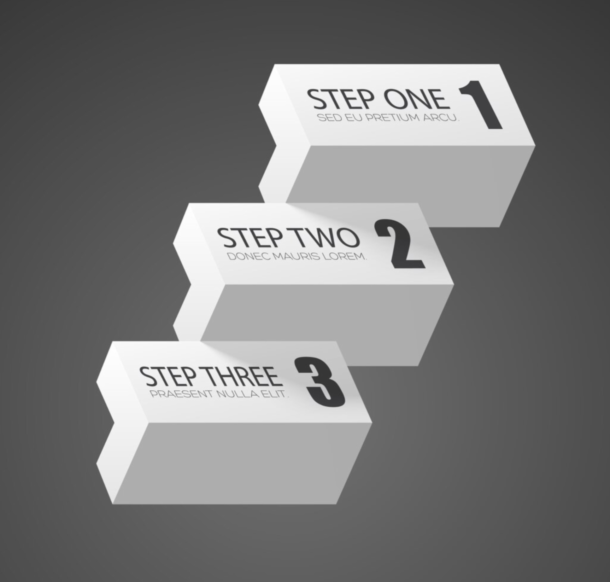The true potential of AR and VR technologies

When we hear about virtual reality and augmented reality we used to think about the movies and gaming industries. Now we’re hearing about the use of VR and AR almost every day, with lockdown in full swing for the second time and no possibility for international travel it seems that both technologies are back in the spotlight.
The events industry in particular, with its pivot to virtual and hybrid events have put VR and AR centre stage of its strategy to keep things running during the COVID pandemic. In a world where social distancing and lockdowns are a regular occurrence, we can expect to see more and more events looking at virtual and augmented reality as a solution.
However, it’s not just events agencies that are using the 3D tech, we’re seeing VR and AR pop up all over the place, including e-commerce, fashion, advertising, experiences and many more.
When we hear about virtual reality and augmented reality we used to think about the movies and gaming industries. Now we’re hearing about the use of VR and AR almost every day, with lockdown in full swing for the second time and no possibility for international travel it seems that both technologies are back in the spotlight.
The events industry in particular, with its pivot to virtual and hybrid events have put VR and AR centre stage of its strategy to keep things running during the COVID pandemic. In a world where social distancing and lockdowns are a regular occurrence, we can expect to see more and more events looking at virtual and augmented reality as a solution.
However, it’s not just events agencies that are using the 3D tech, we’re seeing VR and AR pop up all over the place, including e-commerce, fashion, advertising, experiences and many more.

VR and AR use by agencies and publishers
These technologies were for a long time only accessible to a small portion of the market, but this is not the case anymore. VR and AR are used by agencies and publishers to provide high-quality content that not only engages with the audience but also triggers feeling and emotions, strengthening the bond between a brand and its customers.
If you’re still pondering on whether it’s right or not to invest in these technologies; the answer is YES. The world is moving forward, and customers want more than just to watch an advert or see an image of a product, they want to be part of it, they want to experience it.
The pivot to virtual and hybrid events
It didn’t take long to realise how the potential of AR and VR could be of use in the events industry, and now more than ever is vital to find new ways to bring together audiences in the digital world.
Companies are specialising in creating this type of content that aims to connect with the audience in a very personal way, and among them, Smyle is definitely setting the example. Their solution to the increasing demand for interactive virtual content is called Beyond, and it combines the interactive aspects of real-life events with virtual reality, providing the audience with a new seamless and exciting experience.
Smyle recently partnered with Samsung for the creation of Life Unstoppable, an immersive virtual conference held by the company at the beginning of September. This is a great example of how VR allows companies to create not only engaging content but also unique experiences that make the audience feel part of a brand and connect within a much deeper level.
The agency pushed the boundaries of gaming platform Unreal to host a virtual 3D world, a digital hub which showcased the latest Samsung wearables, TV and audio gadgets. The Unreal gaming platform made its name as the tech behind online games such as Fortnite and Final Fantasy.
Over 4,000 members of the press attended the virtual event and product launch which resulted in a happy client at Samsung and an array of lifestyle, tech and creative industry press carried the Life Unstoppable story.
AR in E-Commerce
So how can you successfully integrate AR and VR content with your client’s e-commerce website? There are lots of different ways to use 3D technologies successfully; their versatility and adaptability mean that the content created can be tailored to any industry’s needs. For example, AR can be used to improve the shopping experience and make it fun for the customers to interact with the products virtually. According to a survey by InvespCRO
- 61% of online shoppers prefer to make purchases on sites that offer AR technology
- 40% of customers would pay a higher price if products could be viewed using AR
- 51% of customers feel like retailers are failing to take full advantage of AR technology
- 70% of customers are expected to be more loyal towards a brand that incorporates AR in their shopping experience
A great showcase of how AR can be used successfully in online retail is provided by ASOS. As one of the most forward-thinking fashion companies, they invested in AR to bring more value to their products and to the shopping experience in general, adding interactive and fun aspects that engaged with customers on a deeper level. In 2019 they launched two projects related to the use of AR: Virtual Catwalk and See MY Fit.
The Virtual Catwalk
For this project, ASOS partnered with a company called holo.me to allow reproducing the videos of their products in real life by turning the models into holograms. This project was announced on social media by the company and it didn’t take long for virtual catwalks to go viral, and for virtual catwalks be shared on every social media platform. After all, who wouldn’t want a model in their living room?!

See My Fit
This was less of an entertaining project, but definitely, a great way to use AR to make the customer feel more important. ASOS wanted to improve its customer’s purchase decision and realised that to do so it was necessary to present their products in a way that was more relatable to the audience. Working in partnership with an Israeli company called Zeekit.me, they were able to show their products on 16 different models with a size range from 4 to 18. After being shot, the clothes were digitally mapped out onto the models in a realistic way by Zeekit, to give the customer a better idea of how the fitting would be on different shapes and sizes.
These two projects show what innovation and technology can do to raise awareness and loyalty towards a brand. As a response to COVID-19, lockdown and the social distancing measures, ASOS is accelerating the use of AR technology to keep a consistent flow of new products on the website, showing everyone that they didn’t only revolutionise the online shopping experience, but also built relationships with other agencies that will contribute to the company’s success despite the difficult time we’re in.
VR and User Experience in Advertising
VR is great for creating immersive experiences that transport the audience into a brand’s world. This is the holy grail of content, the most advanced way to involve the viewers and make them feel part of the content they’re being exposed to. It’s a very powerful tool, with great potential that will become more and more popular in any industry.
Mercedes took their audience on an immersive and interactive journey with the launch of the Mercedes-Benz 2017 GLS sport-utility car. The advert follows the Instagram star Loki and his owner Kelly Lund, through the mountains in Colorado. This 360º virtual experience makes the viewer feel part of the group exploring the snowy surroundings; the ability to look around at the incredible landscape while the advert is playing makes whoever’s watching forget where they are and fully immerse in the journey.
Toms, the American shoe brand, did something along the same lines as Mercedes but instead of showcasing a product, they gave their audience the chance to be part of a trip to Peru. For every pair of shoes that Toms sells, they give one to a child in need.
This VR tour not only gives Toms’ customers the chance to feel part of the brand but also to witness how much difference their purchases can make for others. This advert touches a soft spot in the viewers, increasing the empathy towards the brand and ultimately giving one more good reason to buy a pair of their shoes.
VR use elsewhere
During lockdown 3D technologies have been widely by agencies for their clients all over the world, showing us how AR and VR can be applied to any industry to create useful content that enriches the audience’s experience. Here’s some final examples of VR and AR being used in the wild:
- Complex magazine have built virtual world Complexland to replace Complexcon while we’re on lockdown, mind blowing stuff from the 360° agency / publisher hybrid kings
- Letting customers try before they buy, using AR customers can check out how they’ll look in their new clothes
- Augmented reality tours, scan a QR code on a display and up pops an AR show right before your eyes
- Virtual reality tours, with lockdown in full swing, museums and galleries globally allowed visitors to see their exhibitions from the comfort of their own homes
- AR business cards or branding materials, your client’s phone can turn your scanned card into a source of information about your company, including videos and product demonstrations
- IKEA has an AR app that allows customers to place furniture in their rooms to see how it would look once they get it home
M&A in AR & VR
Many AR and VR agencies are being snapped up by larger creative agencies and prices for these types of agencies will continue to grow. Our bet would be to bolt on a small agency if you’ve had to outsource or contract in new freelancers in recent months. Both technologies will continue to find new use cases post pandemic and many events are looking to move forward with hybrid events becoming the norm in the future.
Hopefully we’ve inspired you to take another look at VR and AR in your campaigns and content creation going forward. Especially if you thought we were out of lockdown and wouldn’t be needing to pivot afterall.
Capital A is the leading creative M&A agency, we help agency owners and CEOs to grow via acquisitions. We can bring a pipeline of potential sellers to the table quickly. Get in touch.


